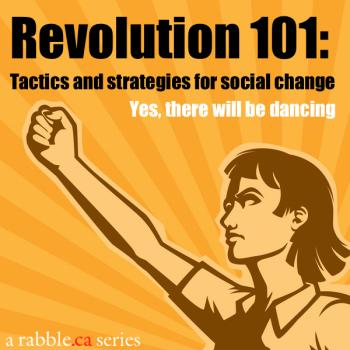This past month, I had the honour of joining hundreds of individuals from all across Turtle Island to stand in solidarity with First Nations communities near Fort McMurray for the fifth and final Healing Walk. The event brings Indigenous and non-Indigenous communities together to focus on healing the land, water, and people from the severe impacts of tar sands projects.
It’s hard to find the words to describe this experience. For the past several years I have been working in varying capacities to oppose fossil fuel extraction projects, including the tar sands. I have done countless hours of research, seen hundreds of photographs, read stories, articles and personal accounts, but nothing prepared me for being there, for bearing witness to the destruction.
The Healing Walk itself winds through 14 kilometres of Syncrude extraction sites, passing by tailings ponds and so-called reclamation projects. The journey takes nearly all day, with stops at four locations on the way to pray for healing of the land and its people.
We walked in the hot sun, the sweat on our skin mixing with the toxins in the air. Many faces were covered with masks to create a shield between our lungs and the very air we were breathing to keep us alive. We felt the tightening in our chests and the heavy breathing triggered by the chemicals in the air. We cried for the destruction of the land, for the pollution of the water, for the damage to the people.
I’ve always known these projects are on the traditional territories of Indigenous communities, but there is something about actually witnessing the massive implications that makes it so much more real. There is something about seeing Elders cry on the side of the road that makes it entirely impossible to ignore the fact that this land belongs to someone, and that someone is not the government, that it is not Syncrude or Suncor, that it is these people. This land belongs to communities who have lived there since far before projects of this scale could even be imagined.
Throughout the weekend we heard from Elders and Grand Chiefs, from mothers and daughters, from those who are standing on the front lines of these projects not just for one day or one weekend, not just for one moment or one action, like so many of us, but day after day after day. We cannot stand idly by as people suffer, and die, at the hands of tar sands expansion. We must come together and look beyond what is here, to what is possible instead. The Healing Walk is a time to begin that process of uniting to bring an end to the destruction, and a beginning to the healing through feasts, prayer, ceremony, dance, laughter, tears, sadness, and hope. Through these core elements of humanity, through connection and community, we can come together and begin building the unity required to bring an end to the injustice.
On the day after the walk itself, a small group of settler organizers from Victoria, including myself, had the privilege of taking a flyover of the tar sands in a six-seater Cesna 206. I’m crying as I write this, because every time I think of the immensity of this project, I am overwhelmed with sadness. Seeing it from the air gives one an entirely different perspective: tailing ponds that stretch for miles, with an oily slick painted across their surfaces in thick washes, huge trucks rolling through trellised open-pit mines in a dark parade of destruction, smoky tendrils curling into the sky from an expanse of man and machine at its worst.
This cannot go on. This injustice must stop. We must come together, from all nations, from all walks of life, and stand in the face of destruction and not step down until we have won. We are fighting massive industry and a government that has chosen to perpetuate colonial systems, environmental racism and rampant destruction of the land and water, but despite that, we have power.
I am so grateful to have participated in the Healing Walk because it has shown me what is possible through human connection; it has shown me that there is unbelievable strength in unity. I will carry that with me, as we all must, to fight for the only answer that we will accept: an end to the destruction and a beginning of healing.
Kelsey Mech is the National Director of the Canadian Youth Climate Coalition. Follow her @kelseymech



